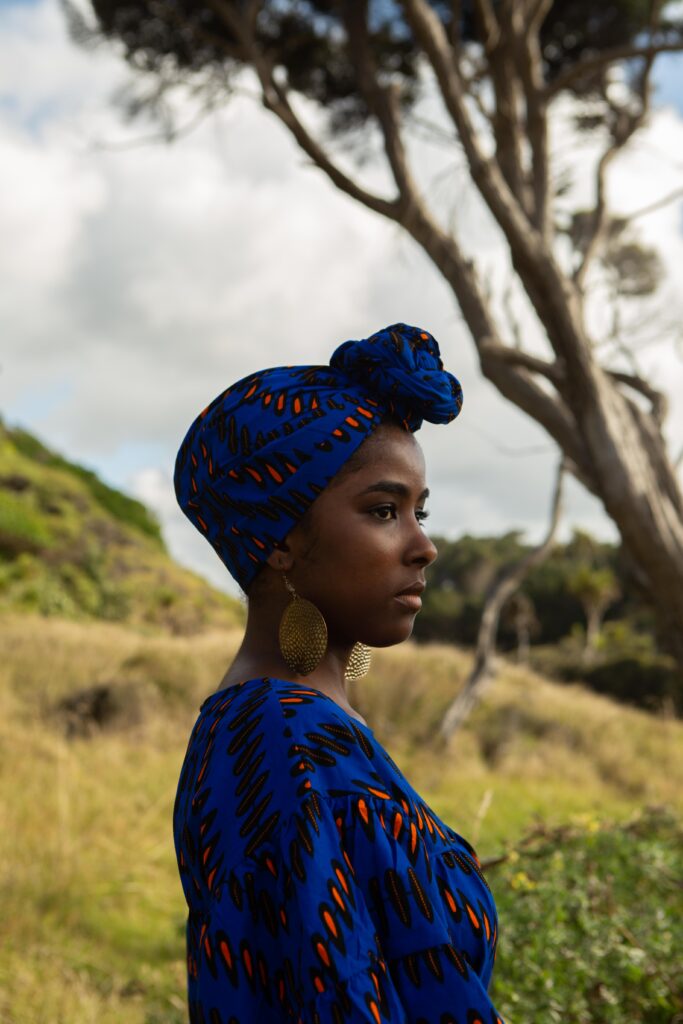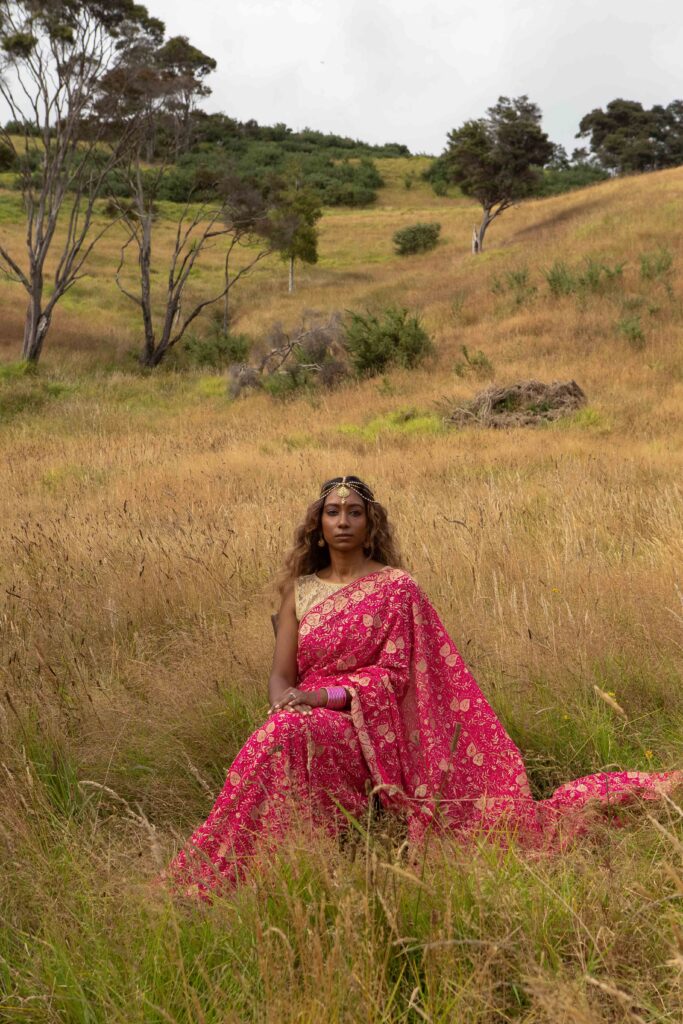Aotearoa NZ Photographers . . . Abhi Chinniah
In our ‘Aotearoa Photographers’ series we sit down with NZ based photographers to learn more about their photographic practice and how their photography career got started.
This week we chat with Abhi Chinniah, a photographer based in Tamaki Makaurau, Auckland, who uses portraiture to elevate marginalised voices, honing in on women of colour, migrant communities, and colourism.
This article is sponsored by MyChillyBin.
Tell us a little about your background – what path/key moments, or people led you to pursue the path to photography?
My roots stem from Jaffna in Sri Lanka, where both my maternal and paternal family sides originate. I am more knowledgeable about the history on my paternal side, so I’ll share those details: my paternal grandfather left Jaffna in the 1800s for Malaysia (known at the time as Malaya). Both my parents were born in Malaysia. In 1973, my father came to Aotearoa as a student, and in 1992, I was born in Christchurch. My parents moved me back to Malaysia when I was 6, where I grew up on the east coast in a small town and attended public school. I speak fluent Malay. Many of my poignant memories are associated with photographs. My maternal grandmother had a large wall in her kitchen covered with images of relatives, family and friends. It was wall to wall of images! Some of these images were taken in Jaffna, as my maternal grandmother spent a significant part of her life there. During her teenage years, she and her siblings moved from Malaysia to Jaffna, but they eventually returned. I need to have more conversations with her about this history and how we remained connected to our roots in this way. These photographs were in sepia and black and white, featuring unsmiling portrait sitters in my bloodline, telling me a story.
When I was 13 or 14, we had family friends visiting from Australia. Their daughter was finishing her last year of school and showed me her camera and the photos she had taken, which were landscapes and ocean shots. I was in awe of her creativity and the fact that she could explore a creative outlet. It was around this time in my life that my father bought a Sony point-and-shoot camera to capture moments from Rotary Club dinners. I quickly took ownership of this camera. I took a lot of “self-portraits,” haha. But there was another budding interest: my love for photographing people. I remember taking portraits of my school friends. I didn’t continue photographing after leaving home but rediscovered it in my mid-twenties. During my formative years and into adulthood, I didn’t (and couldn’t) consider art as an option I could pursue, it was most definitely not something that was encouraged. When I found it again, and decided I wanted to take it seriously, It was like finding a long-lost love.


How would you describe your photographic approach?
I start from lived experience. Following that, I build relationships. And then I photograph. All of my photographs are taken on Aotearoa landscape.
Have there been any key pivotal moments in your career that have helped you to develop as a photographer?
I think of every photo essay as growth. I am a self-taught photographer, and have had to learn and in many ways create my own steps in creating work, putting that work together and then showing it to an audience. Every small step and every idea is development for me.


One of your previous projects, A Migrant’s Path, was recently acquired by The National Library of New Zealand. Are you able to talk a little about the creative journey of this project? Were there any moments that deeply challenged you and if so, how did you navigate them?
The idea for A Migrant’s Path came to me after my debut photo essay, “Light Skin Dark Skin,” which explored the experiences of colourism and reverse colourism. “A Migrant’s Path” was my wanting to understand migration journeys and how they are linked to issues such as skin colour discrimination, preserving one’s culture, honouring their mother tongue, and more.
In any project, there are moments that can be challenging. This is because both I and my portrait sitters are bringing up experiences that can be painful to talk about. I believe that connection is crucial. In these situations, I am not just the photographer, and the person I am photographing is not just a portrait sitter. The layers go deeper than that; it becomes something that falls between friendship and family. We create spaces for us to discuss difficult topics. But in doing this, we see that we are not alone, and that has been a huge thing for me personally.
Another challenge, and certainly an ongoing one, is funding my projects. I do not have a team, and this can be immensely stressful as I am running my projects from start to finish with no external support. I often feel very alone in what I do, which is ironic considering I photograph people. I love what I do and am passionate about it, and that is why I have continued to do it.



Your newest project, No. 13, is currently on exhibition at Te Atamira Whakatipu. Tell us a little about it and what you hope viewers will take away from it.
No. 13 is a deeply personal body of work. It was only after putting most of this series together that I realised No. 13, which is a series of narrative portraits, could only have happened after I had completed my documentary-focused photo essays. My previous photo essays have been like therapy for me.
No. 13 is a departure from my documentary style of storytelling. I developed characters that live in a small town, and each of these characters is enduring a mental health crisis of their own. I think of this collection as moving through chapters in a book, so when you see the show, you’ll find a recommendation from me to start with one character and finish with another character. All of me is in No. 13. Alongside No. 13, Te Atamira is also exhibiting my wider collection, and this is a very special moment for audiences to see not only the evolution of my work but also how these photo essays are connected.

How do you see your photography practice developing, what are your main aspirations for the next couple of years?
My aspirations are to continue growing No.13 while also developing my documentary projects – I’d love for my portraits to find an ongoing more permanent home to be exhibited in too.
Lastly, How can people get in touch or see more of your work?
The best way to find me is via my Instagram page @ramiistudio




